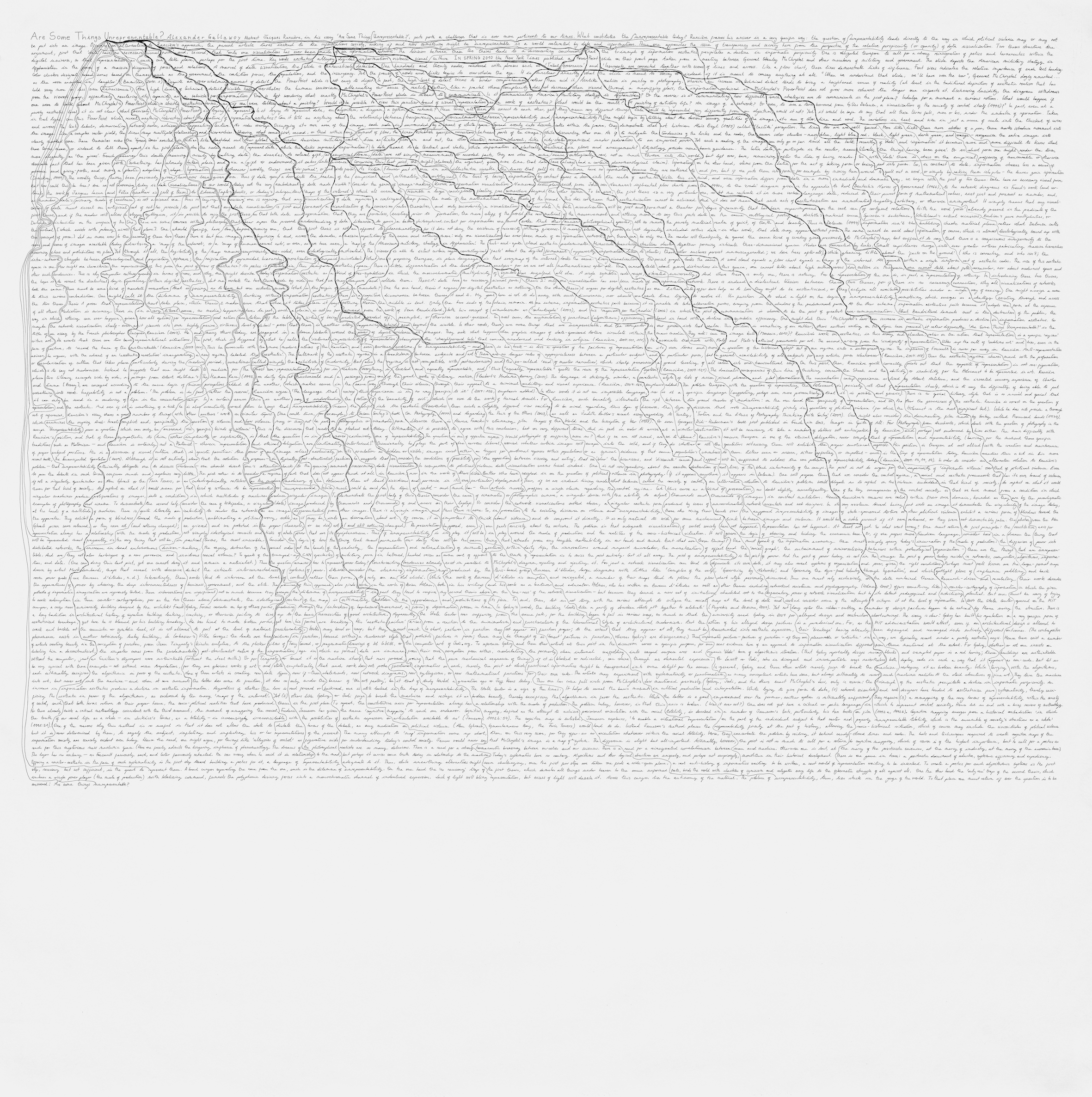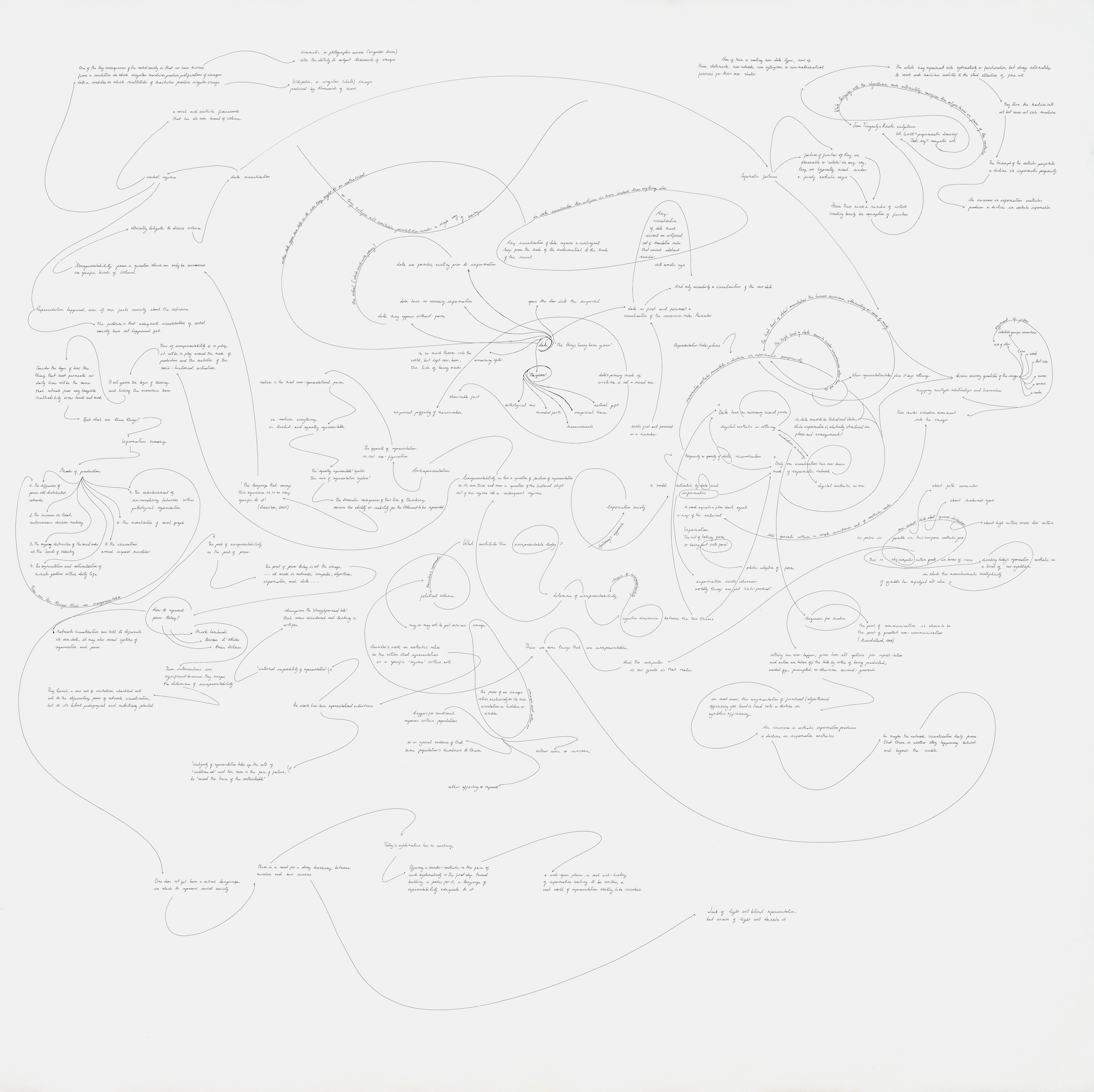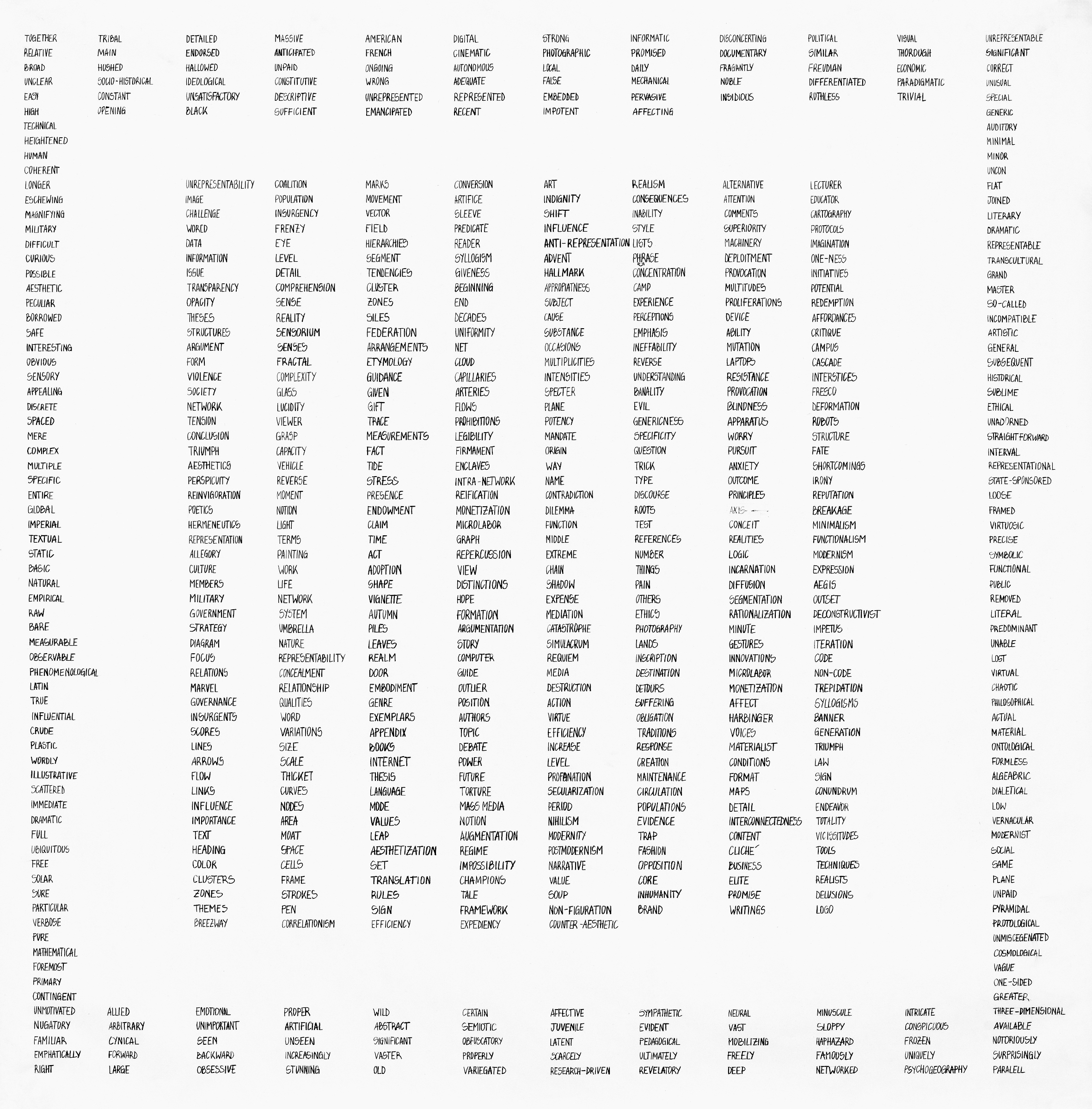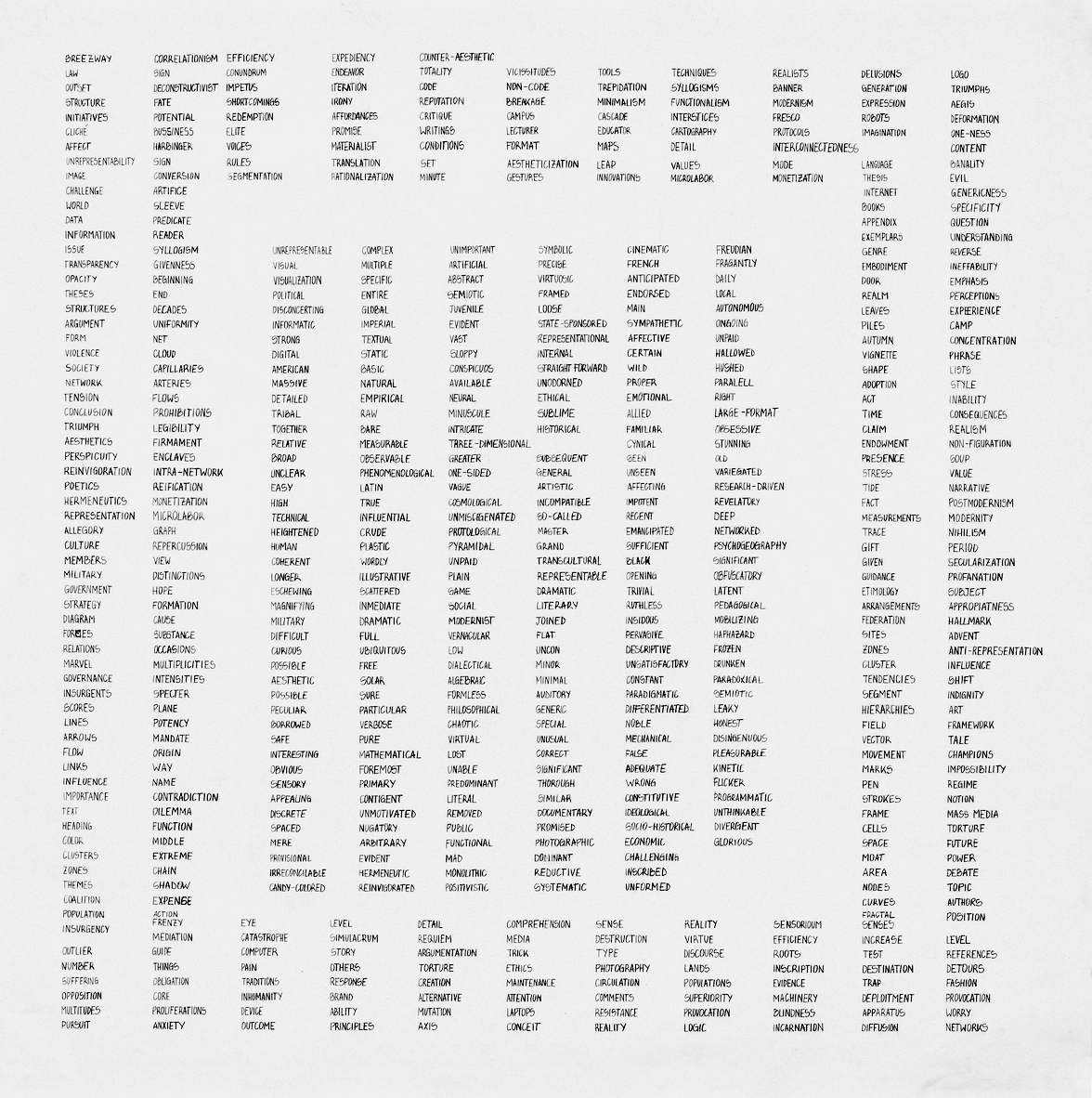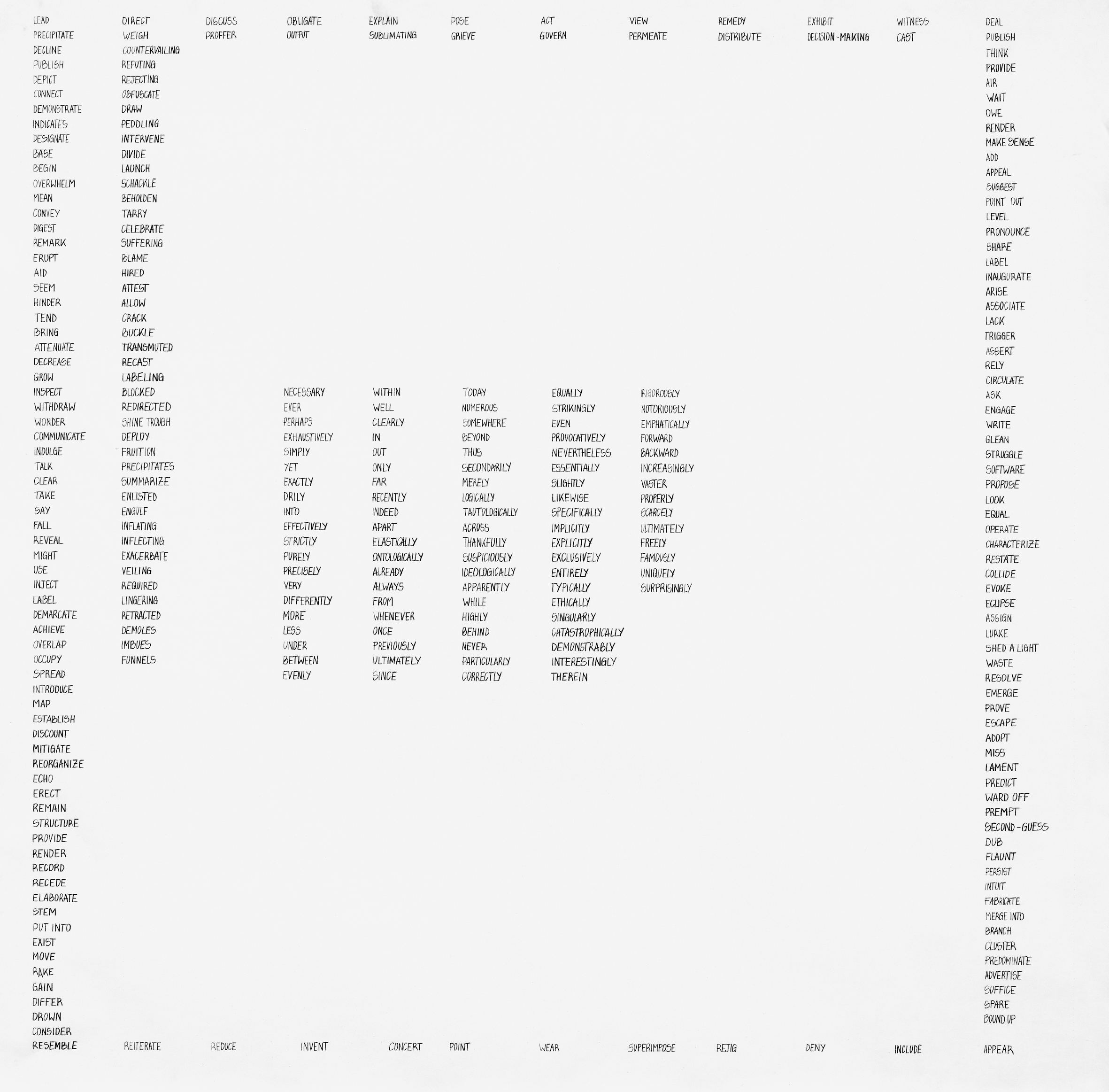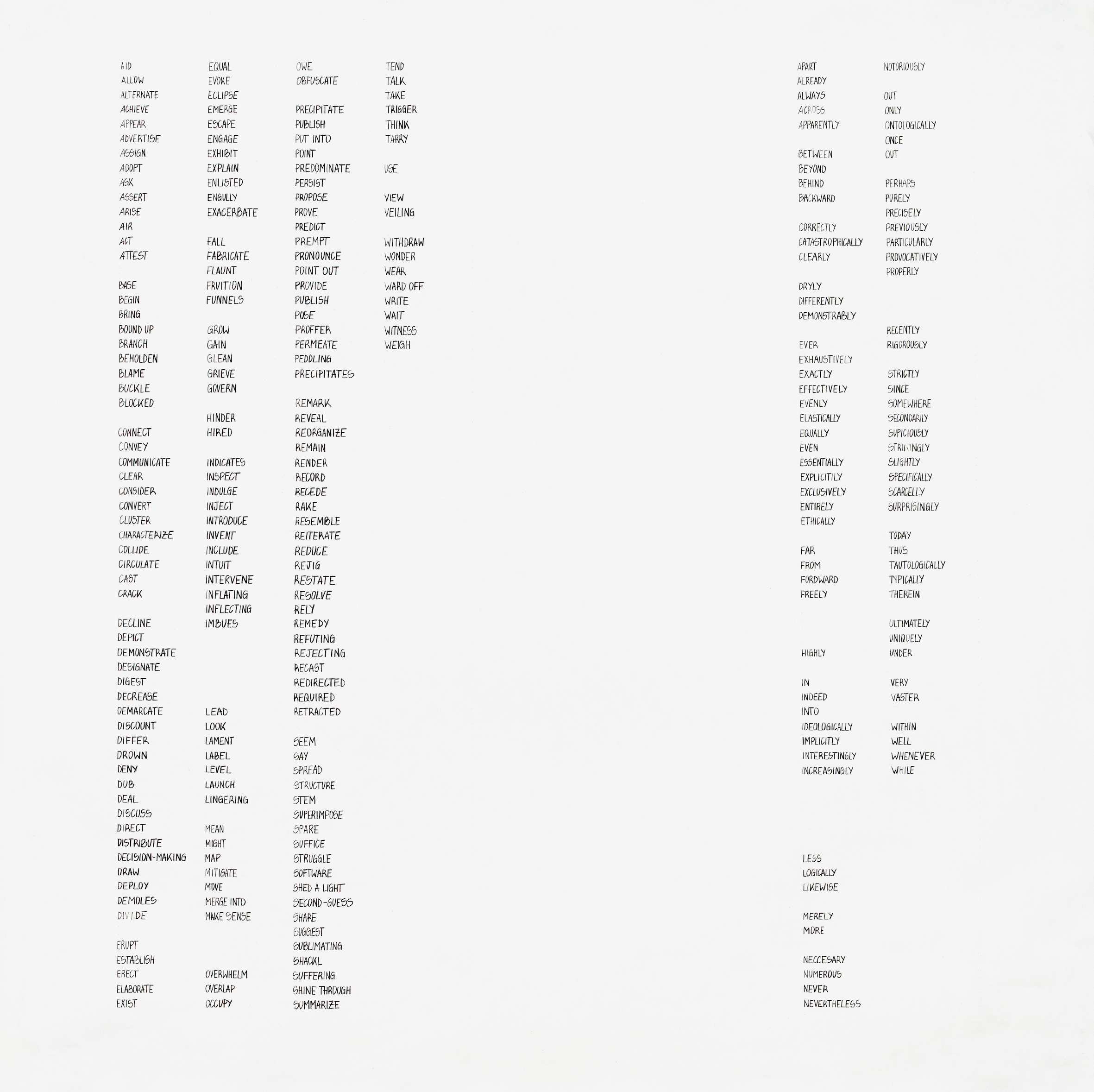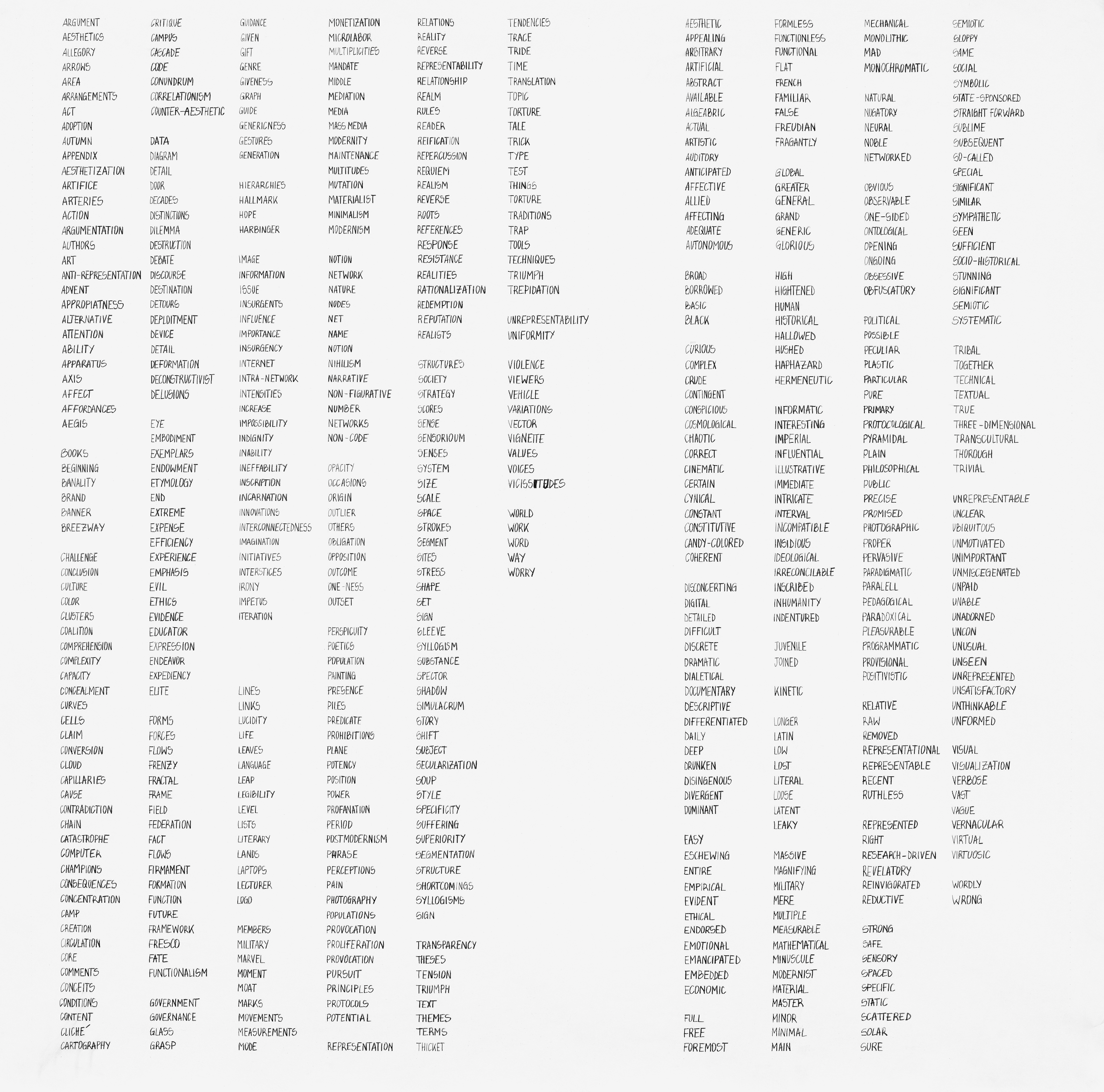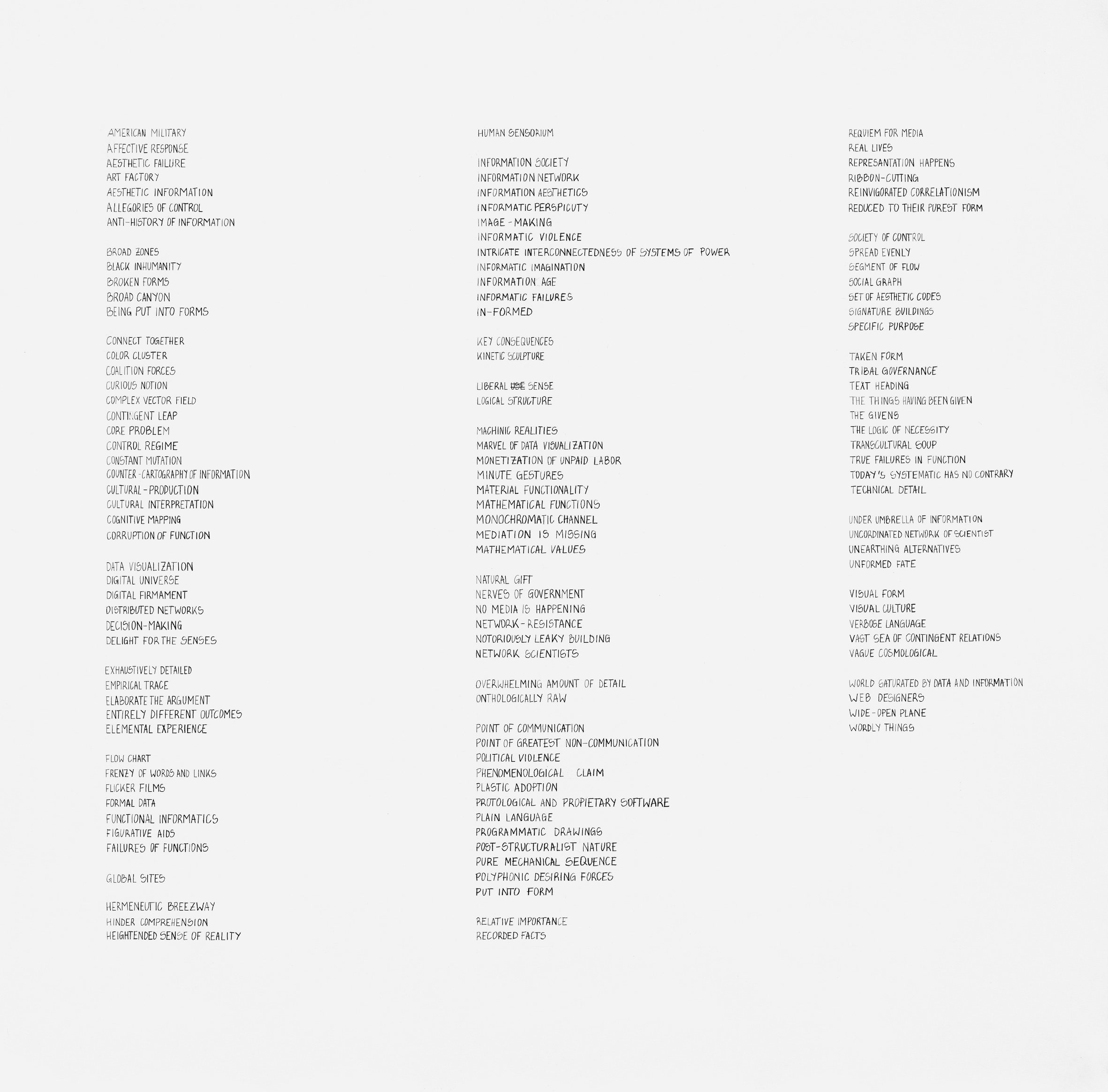Are Some Things Unrepresentable?
Transcription of Alexander Galloway's article.
2024. Hand Drawings 150 x 150 cm. Black Ink and Compressed Charcoal on Paper.
In his essay on the unrepresentable, Alexander Galloway argues that data, in its pure state, lacks visual form. It exists only insofar as it is organized and made visible within a network of information. To understand this, it is worth bringing up the etymologies of these two terms “data” and “information” that Galloway himself mentions in his text. That which we call “data” refers to “that which has been given”: facts, measurements, “raw” records that remain after the tide of being recedes (Galloway, 2011). “Information,” on the other hand, is the act of giving form to that data, of organizing it into a comprehensible - or instrumentalized - narrative by appealing to the plasticity intrinsic in its practice. The latter is reminiscent of media theorist McKenzie Wark's reflection between facts and fiction. Although commonly considered opposites, they have their origin in a basic similarity: a practice. Both are actions that are embedded in the world and whose importance and existence are intrinsically linked. Therefore, it is undeniable that fiction is at the very core of the reproduction of facts, since there is always an interference on the part of the reporter. This agency lies in their shared etymology: (lat.) fingere/fictio: “to give form.” As Wark points out: sometimes we need a fiction to hold facts together[1].
[1] RIBOCA. (2020, September 24). McKenzie Wark “Ficting and Facting” [Video]. YouTube. https://www.youtube.com/watch?v=YbInv9C1lY0
Text @Lorena Moreno Vera
Photos @Pixelstorm
